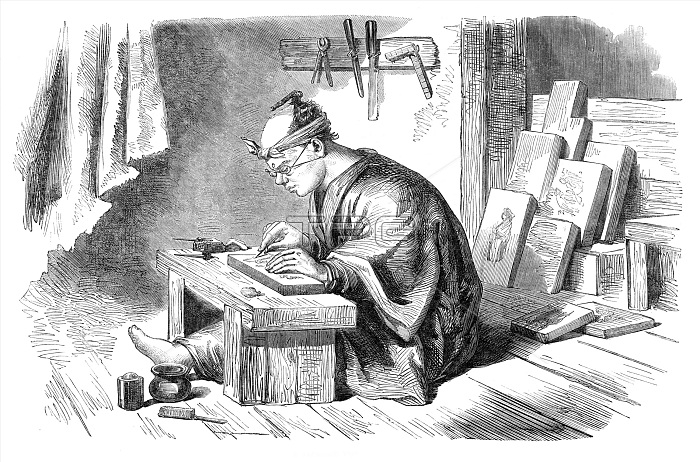
A Japanese wood-engraver, 1864. ...from a sketch by our Artist at Yokohama. It is painful here to observe the uncomfortable position of the Japanese engraver at his work - to see how he is doubled up at the apology for a table, and in what an awkward way he holds the style. But we are amused when we look at his wonderful spectacles, tied round his ears with a piece of string. The instruments he uses are of the simplest description; and his wood is not hard, like our boxwood, but extremely soft. His mode of operation is this: the subject to be engraved is first drawn on a thin piece of paper with Indian ink and a Japanese paint-brush. The drawing is then reversed and pasted on the wood. The paper is oiled and left on the wood till the engraving is finished. All the black lines in the drawing are thus left in relief. The block is then washed and covered with printing-ink made of lampblack and glue. The printing is performed by laying a clean sheet of paper on the block and pressing the surface, by hand, with a round tool covered with a dried leaf. This operation goes on till thousands of copies are printed. The Japanese also print in colours, by having different blocks of wood for the different colours. From "Illustrated London News", 1864.
| px | px | dpi | = | cm | x | cm | = | MB |
Details
Creative#:
TOP29737561
Source:
達志影像
Authorization Type:
RM
Release Information:
須由TPG 完整授權
Model Release:
Not Required
Property Release:
Not Required
Right to Privacy:
No
Same folder images:

 Loading
Loading